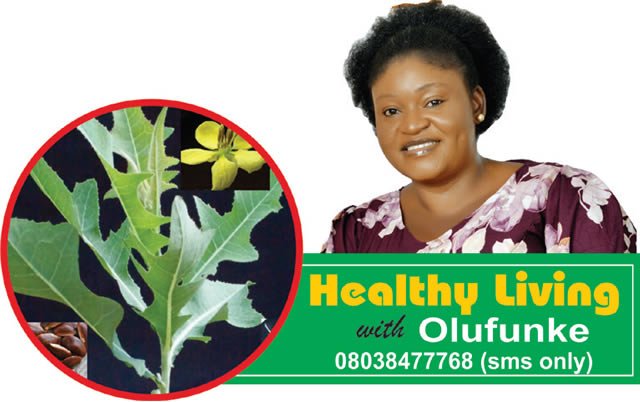
Did you know that African star apple (Agbalumo) has 100 times the amount of ascorbic acid (vitamin C) than oranges? It is in season now, take the advantage. One of my siblings, Mrs Abiodun Hunpatin, told me a story some years back and I would like to share it with you. She said her friend’s husband complained to a woman about the frigidity the wife experiences. The woman who heard the complaint got a plant, squeezed it and gave the water to my sister’s friend to drink and that was the end of the frigidity. My sister said her friend told her that after taking the plant, she gets easily aroused.
The funny thing is that it was just one dose. Most times, it is men’s erectile dysfunction that is talked about whereas women suffer from these things too. The painful part is that my sister has not seen the woman who prepared the herb. Such a plant needs to be identified because a lot of women out there suffer from frigidity. At this point, one might say that there is no limit to what nature can do.
I will discuss onion and garlic peels this week. No, I am not talking about the fleshy parts. It’s that papery part you always throw away. The outer skins of onions and garlic provide an excellent source of vitamins A, C, E and numerous antioxidants. Major bioactive components especially total phenolics, total flavonoid and its derivatives are present in them and their therapeutic applications are cardioprotective, neuroprotective, antiobesity, antidiabetic, anticancer and antimicrobial agents. Onion peel contains a particular flavonoid called quercetin which is a potent antioxidant and anti-inflammatory that has long been recognised for its anti-ageing properties. When it comes to its health benefits, quercetin really does it all. It keeps the skin smooth, supple and wrinkle-free by preventing sun damage from UV rays. Studies have shown that this powerful flavonoid is key in lowering blood pressure, reducing inflammation and allergies, cutting down your risk of Alzheimers or dementia and preventing cancers. Garlic skin has health benefits too. They are rich in anti-bacterial, antiviral and anti-fungal properties. There is a lot of vitamin A and C in there as well as anti-inflammatory phenylpropanoid antioxidants.
A health practitioner, nutritionist and macrobiotic health coach, Shilpa Arora, says, “Generally, the skin of almost all vegetables and fruits are loaded with nutrients. Onion skin also provides many health benefits.”
Triple board-certified dermatologist, Mamina Turegano, M.D. and her old mother swear by onion peel tea for supple skin and a youthful complexion. The quercetin in the onion peels helps fight off inflammation and free radicals which are two things that can contribute to aging, fine lines and the development of crepey skin texture. Quercetin may also protect your skin from sun damage. While any onion skins will do, red onions also contain high levels of anthocyanins which are beneficial pigments that are anti-inflammatory and antimicrobial and thus can contribute to glowy skin.
Chef and host of the TV show Counter Space, Sophia Roe, shared a mouth-watering recipe for garlic chips on her Instagram page that likely had her hundreds of thousands of followers stocking up on skins. She recommends tossing garlic skins in some olive oil, sprinkling them with a little salt and baking them for 10 minutes at 425°F until they turn into crispy, crunchy “chips.”
From here, you can mix them into salads or sprinkle them wherever you need a flavour (and a crunch) boost. You can do the same thing with skins from onions too. Some cooks also use a mortar and pestle to break up garlic skin and add it to bread dough to impart a mild garlic flavour.
Let us see some of the benefits
- Onion and garlic skins can be used to add extra nutrition to soups and stews
- Better roasting
Keep the skins on your garlic when you roast them. The protective layer keeps your garlic soft inside.
Since both garlic and onion are antifungal and anti-inflammatory, applying garlic- and onion-infused tea topically may help relieve itchy skin. Just steep them in warm water like you would with a tea, but instead of drinking it, dip a cotton wool in the mixture and apply it directly to the problem area.
Aside from the fact that the act of sipping on tea is relaxing in itself, the tryptophan in onion skin tea may contribute to better-quality sleep. If you combine the onion skins with another relaxing herbal tea, like chamomile, you may be able to really optimise the sleep-inducing benefits
Pigment-rich skins, like those in red onions, have been used to dye textiles long before artificial colouring came about. If you want to try it yourself, Anjolie Noelle, a botanical and food waste dyer, says the best way to do it is to add the onion skins to a pot of water and let them simmer for an hour before adding the fabric. Once the fabric is in the dye, let it sit for another hour.
- Garlic and onion skins add nutrients to your compost pile, They give relief from muscle cramps
- Used as hair dye
Scientific studies
In a study titled, “Onion Peel: Turning a Food Waste into a Resource,’’ by Celano et al, the conclusion is that this agricultural waste can provide bioactive molecules for multiple applications, from industrial to nutraceutical and cosmetical sectors.
In a study titled, “Onion (Allium cepa L.) peels: A review on bioactive compounds and biomedical activities,’’ by Kumar et al, the conclusion is that with increasing burden of lifestyle disorders/non-communicable diseases, finding suitable natural alternative for their treatment is one major concern of the researchers and onion peel and its extract can be exploited as a prime ingredient.
A study titled, “Onion flesh and onion peel enhance antioxidant status in aged rats,’’ by Park et al was designed to investigate the effects of dietary onion flesh or onion peel on lipid peroxides and DNA damage in aged rats. The conclusion is that onion flesh or onion peel enhanced antioxidant status in aged rats and may be beneficial for the elderly as a means of lowering lipid peroxide levels.
In a study titled, “Using as a drug and food of industrial waste garlic skins Selen Akan. An investigation of the composition of garlic skins showed the presence of proteins, lipids, lignin, mannitol, pectin and polysaccharides.’’
Onion peel tea is a good low-calorie beverage that you can sip from time to time. To make onion/ garlic tea, wash the peels and place a handful in a pot with water. Bring the water to a boil and then let it simmer for 15 to 30 minutes. Strain the mixture into a mug so that you do not get any onion skin floating around in your drink. You can dry the peels and grind them. The powder can be used in your cooking. You can also make garlic peel chips like chef Sophia did.
Copyright PUNCH.
All rights reserved. This material, and other digital content on this website, may not be reproduced, published, broadcast, rewritten or redistributed in whole or in part without prior express written permission from PUNCH.
Contact: [email protected]





